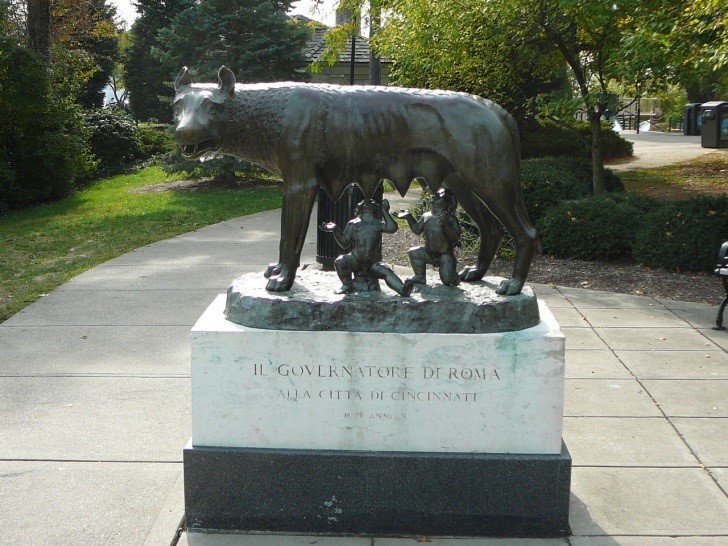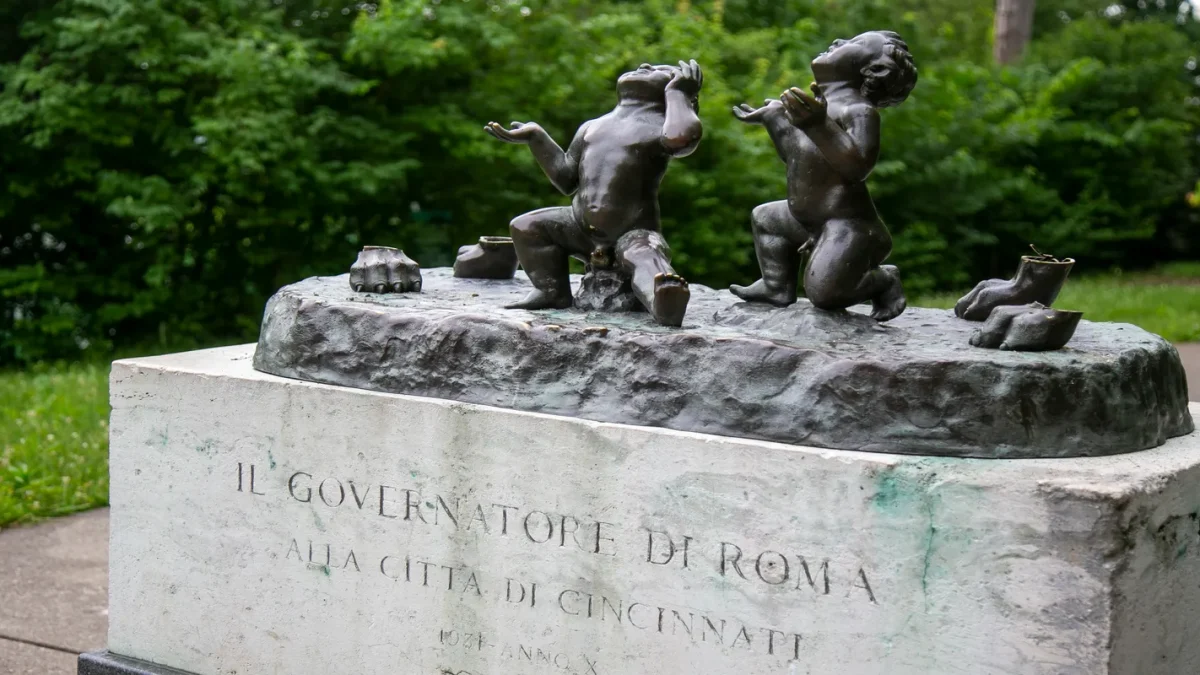
The She-Wolf (“Lupa”) was stolen from Eden Park on June 16, 2022, ironically, the same day I returned from a trip to Rome. It is a tragedy for all of us who value history and who understand and appreciate the importance of the Wolf to the founding of ancient Rome, to Roman history, and to Roman life and character, but also to many generations of Cincinnatians. The story of the Wolf, one of countless animals helping humans throughout the ages, is a sweet and engaging one. The statue was a gift of the city of Rome, then a sister city of Cincinnati, the city named after a Roman general. Yes, it was gifted while Mussolini was the ruler of Italy; however, the artist of the original statue of the Wolf, probably without the twins, was ancient Roman or, possibly, Etruscan or, according to some scholars, medieval, having no connection to Fascism. There are many literary accounts of the story in ancient Roman authors such as Livy, Dio Cassius, Ovid and others. Here is one of Ovid’s accounts:
“A she-wolf which had cast her whelps came, wondrous to tell, to the abandoned twins: who could believe that the brute would not harm the boys? Far from harming, she helped them; and they whom ruthless kinsfolk would have killed with their own hands were suckled by a wolf! She halted and fawned on the tender babes with her tail, and licked into shape their two bodies with her tongue. You might know they were scions of Mars: fearless, they sucked her dugs and were fed on a supply of milk that was never meant for them. The she-wolf (lupa) gave her name to the place, and the place gave their name to the Luperci. Great is the reward the nurse has got for the milk she gave” (Fasti 2.413-432).
I had suggested that the statue be moved to the John Miller Burnam Classics Library or to the lobby of the Blegen library building. Let us hope that the criminals who stole the sculpture develop a conscience and return it to the City of Cincinnati, and that the City finally decides to protect it by having it housed in the classics department or classics library of the University of Cincinnati or in the Cincinnati Art Museum.

